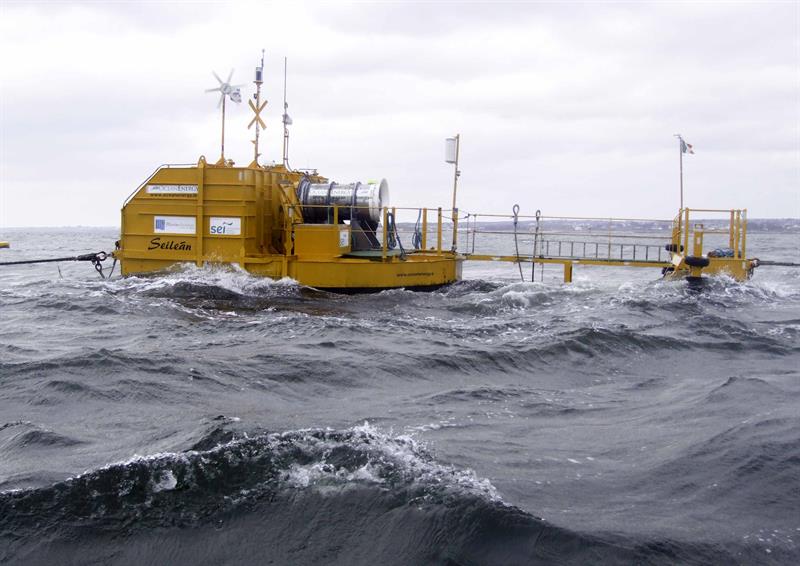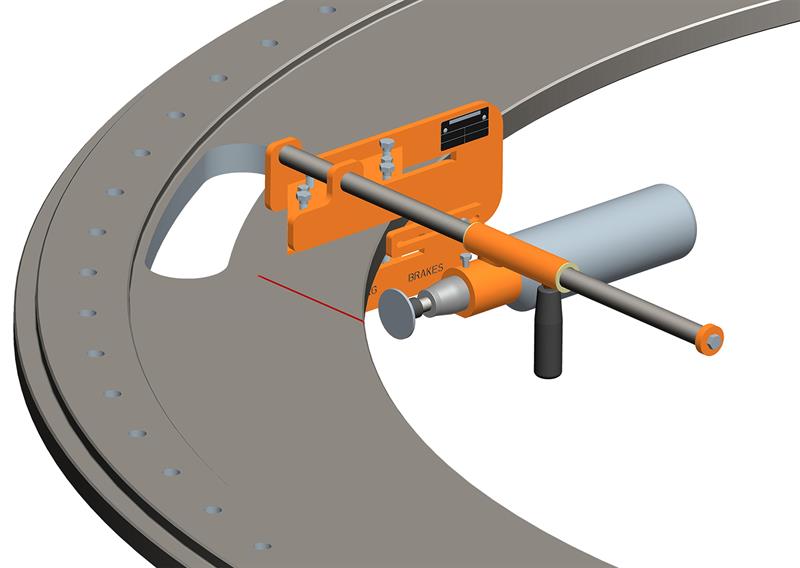Materials in particular is an area where the offshore renewables sector has seen notable innovation, with the need to minimise maintenance in such remote and inaccessible locations incentivising the use of materials that ensure longer structural and component life.
Clearly, given the conditions faced by offshore wind farms, corrosion from seawater is a concern. In particular, there is a need to protect the steel foundations of the wind turbines from corrostion. This inspired an innovation by engineering design consultancy Ramboll on the offshore wind farm Arkona in the Baltic Sea that received the German Renewables Award.
The Arkona project is located 35 km northeast of the island of Rügen. The wind farm will have a capacity of 385 MW and will be able to supply up to 400,000 households with renewable energy from 2019 onwards. It will install 60 6MW turbines based on monopile foundations designed by Ramboll.
Traditionally, sacrificial anodes have been applied to the monopiles to prevent corrosion. However, by its nature, this solution involves an ongoing cost in regular assessment, maintenance and replacement of the anodes. Clearly, over the 25-year operating life of an offshore wind farm, such costs are not inconsiderable.
In addition, there is a strong environmental imperative for a new solution, since the use of sacrificial anodes has involved emissions intothe sea of several hundred tonnes over the years.
Instead, Ramboll’s solution has been to use Thermally Sprayed Aluminium (TSA) in the manufacture of the monopiles. TSA itself is not new, but it is a very real departure in this type and scale of application. TSA has so far been used primarily as corrosion protection for smaller steel components under water or for larger components above water, such as offshore substations. Arkona is the first project to install all monopiles of an offshore wind farm using this corrosion protection technology.
 This was only achievable by employing innovative application and fabrication methods developed by EEW SPC and Krebs Korrosionsschutz. Here, during the coating process, a robot sprays molten aluminum onto the 81m long, 1200-tonne monopile foundations using two arc burners. The surface is then sealed with a synthetic resin.
This was only achievable by employing innovative application and fabrication methods developed by EEW SPC and Krebs Korrosionsschutz. Here, during the coating process, a robot sprays molten aluminum onto the 81m long, 1200-tonne monopile foundations using two arc burners. The surface is then sealed with a synthetic resin.
Another award-winning use of materials for renewable energy applications can be seen in a new multi-material connector for wave energy devices from London’s Brunel University.
The connector features a novel material called Basaltium, made from recycled aluminium strengthened by tiny basalt fibres, and a coating from a custom formulated, low-friction grade of cast nylon, called Oilon – made by Nylacast. Together, Basaltium and Oilon make connectors lighter and tougher, which means that moorings can last longer and cost less to manufacture and maintain.
Connectors are key components that join moorings with floating devices such as tidal energy converters with their anchors. Designed first for floating wave energy converters, the connectors are the work of STORM (Specialised Thimbles for Offshore Renewable Marine energy) – a project by Tension Technology International (TTI), Brunel University London, Nylacast and the European Marine Energy Centre (EMEC).
Lorna Aguilano, from Brunel’s Experimental Techniques Centre which developed Basaltium with Brunel Centre for Advanced Solidification Technology, said: “Connectors between the mooring ropes and the device are one of the main challenges for offshore renewable energy. Generally, at connector point, the ropes deteriorate and end up breaking, with big costs for retrieval. So normally the ropes are changed every five years to avoid this.
“Our team has developed an extra-light material that, when incorporated in Oilon and used to make the innovative connector designed by TensioTech, would solve this problem – increasing the in-service life, minimising capital expenditure and maintenance costs.”
The partners recently received the ‘Rushlight Responsible Product or Service Award’ at a ceremony at the Royal Geographical Society.
Brake innovation cuts wind turbine noise Noise is a significant issue in relation to wind turbines. In particular, noise generated by the operation of the equipment in the nacelle is seen as especially problematic. Yaw noise is a significant contributor to the noise produced by wind turbines and can be created by the contact between the yaw brake pads and the disc during nacelle adjustment into the wind. The brakes are released sufficiently to allow the yaw motors to turn the nacelle into the wind before being reapplied to hold the position. There is a direct relationship between the amount of noise and the glazing on the brake pad surfaces. While the nacelle is facing directly into the wind, the yaw brakes are pressurised to around 160 bar, but when the nacelle needs to turn, this pressure is reduced to around 30 bar. This enables the yaw motors to adjust the direction of the nacelle without losing control of it. As the brakes are always engaged, a small amount of powdered friction material is created, along with some particles from the disc. At the low pressure used during yawing, some of the powder created between the pad and the disc sticks to the pad surface, giving it a glazed appearance. Svendborg Brakes completed an in-depth analysis of the issue. The outcome was a novel solution that involved cutting a specially-shaped groove into the brake disc. This made it is possible to remove existing glazing and prevent it from occurring in the future. The groove does not increase brake pad wear significantly, but it does help to remove the build-up of powdered material in conjunction with a brush that is installed at the same time. Tests have shown that grooves cut into the brake disc removed the glazing on the brake pad and increased pad wear by only 3.5%, when operating at a pressure of 30 bar. These tests were conducted using brake pads from Svendborg Brakes that include a slot in the friction material that also helps to keep the braking surface clear of debris. What became apparent from the testing was the importance of the size and shape of the groove. This made it essential to create a system that could replicate the most efficient design of groove and enable engineers to carry out the work. The testing resulted in a kit being created that would enable an engineer to install eight grooves in total, four on the upper surface and four on the lower surface of the brake disc. The kit includes the fixturing template to correctly align the groove on the disc. Over 18 months, Svendborg Brakes was involved with the modification of 25 turbines where the groove solution was installed on units from various OEMs. Since this work was completed, none of the turbines have so far produced any noise from the yaw brake system. |








